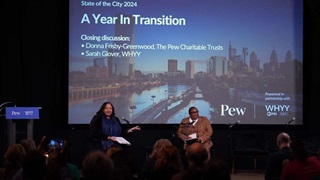Disaster Mitigation Saves
The business case for building stronger, smarter infrastructure
On Oct. 30, 2018, The Pew Charitable Trusts and the National Institute of Building Sciences hosted a webinar that featured a discussion of the latest findings from “Mitigation Saves,” a multiyear study the institute is conducting. Interim results released this year included the finding that every $1 invested in disaster mitigation through federal grants saves society $6 in future disaster costs. The latest report examines the return on investment when governments fund enhancements to transportation infrastructure, electric grids, and water systems to make them more resilient to floods and other natural hazards.
The event featured:
- Forbes Tompkins, officer, flood-prepared communities initiative, The Pew Charitable Trusts.
- Ryan Colker, vice president, National Institute of Building Sciences.
- Philip Schneider, program director, National Institute of Building Sciences.
- Melissa Clow, civil engineer, Iowa City, Iowa.
Here is a video of the event.
Spotlight on Mental Health
MORE FROM PEW
Explore Pew’s new and improved
Fiscal 50 interactive
Your state's stats are more accessible than ever with our new and improved Fiscal 50 interactive:
- Maps, trends, and customizable charts
- 50-state rankings
- Analysis of what it all means
- Shareable graphics and downloadable data
- Proven fiscal policy strategies
Welcome to the new Fiscal 50
Key changes include:
- State pages that help you keep track of trends in your home state and provide national and regional context.
- Interactive indicator pages with highly customizable and shareable data visualizations.
- A Budget Threads feature that offers Pew’s read on the latest state fiscal news.







